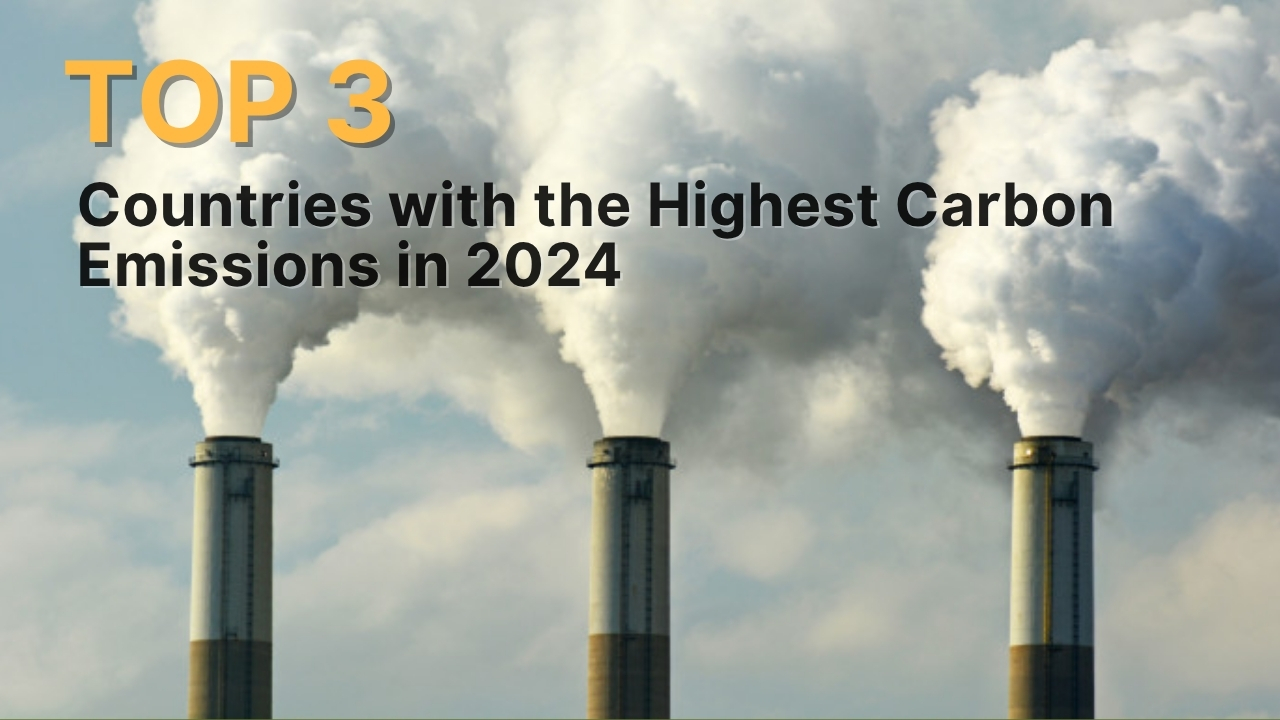Top 3 Countries with the Highest Carbon Emissions in 2024
Others

As the climate crisis escalates, emissions data highlights that a small number of countries are responsible for a significant share of global greenhouse gases. In 2024, China, the United States, and India emerged as the top three emitters, collectively contributing to over half of global CO₂ emissions. Here's a closer look at their emission profiles and climate strategies.
China
Since 2005, China has held the position as the world's largest carbon emitter. In 2024, the country emitted 12.6 gigatons of CO₂, about one-third of total global emissions.
China has announced a new comprehensive climate plan that will include all greenhouse gases, not just CO₂ from energy. This includes targeting methane emissions, which are particularly high due to coal mining and agriculture. The plan is expected to be finalized ahead of COP30 in November 2025.
China aims to reduce the carbon intensity of its GDP by over 65% compared to 2005 levels by 2030 and achieve carbon neutrality by 2060. It has also signed the Glasgow Leaders’ Declaration on Forests and Land Use, committing to halt and reverse forest loss by 2030.
United States
The United States emitted 4.5 gigatons of CO₂ in 2024, making it the second-largest emitter globally.
The previous administration under President Biden enacted the Inflation Reduction Act (IRA), committing to halving emissions by 2030 and reaching net-zero by 2050. The U.S. also pledged to cut emissions 61 to 66% below 2005 levels by 2035 and signed the Glasgow Leaders’ Declaration.
However, the current administration under President Trump has reversed many of these commitments. The U.S. has exited the Paris Agreement and reopened the Arctic National Wildlife Refuge to oil and gas exploration, raising concerns over the country's long-term climate credibility.
India
India became the third-largest emitter in 2023, surpassing the European Union. In 2024, India’s CO₂ emissions reached 3 gigatons.
Despite its growing emissions, India is rapidly expanding its renewable energy sector. As of October 2024, 46.3% of its electricity came from renewable sources. Under its enhanced Nationally Determined Contributions (NDCs), India plans to:
-
Reduce emissions intensity by 45% by 2030
-
Generate 50% of its electricity from non-fossil fuels by 2030
-
Reach net-zero emissions by 2070
India also aims to increase forest cover from 25% to 33% and restore 26 million hectares of degraded land to establish an additional carbon sink of 2.5 to 3 billion tonnes of CO₂ equivalent.
Want to expand your knowledge on decarbonization and carbon market topics? Don’t miss our weekly articles on Insights page and follow our LinkedIn to stay updated 🌳
References:
Chase, M. (2025). Trump 2.0: Actions We Are Likely to See Against Climate, Nature, and Wildlife. Earth.
Civillini, M. (2025). China commits to full climate plan, emission ambition still unclear. Climate Home News.
IEA. (2025). CO2 Emissions – Global Energy Review 2025. IEA.
Reid, A., & Robins, A. (2022). Biden’s Executive Order on forests can help stop Wall Street from financing deforestation. Global Witness.
Schwab, N., & Jani, B. (2022). Here’s why forest restoration is key to India’s ambitious climate goals. World Economic Forum.
The Energy and Resources Institute. (2025). WSDS 2025 Thematic Tracks - Climate Finance: Accelerating India’s Decarbonisation Journey. TERI.
The Oxford Institute of Energy Studies. (2025). 23: Forestry. Guide to Chinese Climate Policy.
U.S. Department of State. (2025). The Climate Crisis: Working Together for Future Generations.

